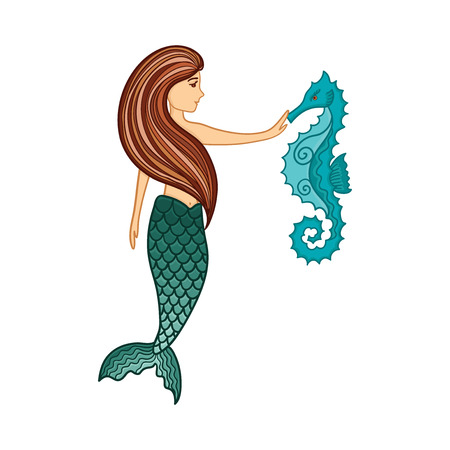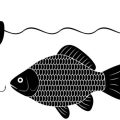Introduction to UV Protection in Fishing Apparel
For anglers, spending long hours out on the water under the sun is part of the adventure. However, those sunny days can pose serious health risks if proper precautions arent taken. Ultraviolet (UV) radiation from the sun can cause sunburn, premature skin aging, and significantly increase the risk of skin cancer. According to the American Cancer Society, skin cancer is the most common cancer in the United States, and unprotected exposure to harmful UV rays is a major contributor. Thats why UV protective clothing has become an essential part of modern fishing gear. Designed specifically for outdoor enthusiasts, this specialized apparel provides a reliable barrier against the sun’s most dangerous rays, helping anglers enjoy their time outside while staying safe and healthy. Understanding how these garments work—and why theyre crucial for your well-being—can make all the difference on your next fishing trip.
2. How UV Radiation Affects Your Skin
Understanding the science behind UV protection fishing clothing starts with knowing how UV radiation affects your skin, especially during long days on the water. There are two main types of ultraviolet (UV) rays that reach the Earth’s surface: UVA and UVB. Both can damage your skin, but they do so in different ways.
| Type of UV Ray | Penetration Level | Main Effects on Skin |
|---|---|---|
| UVA | Deep into the dermis (second layer) | Premature aging, wrinkles, and long-term skin damage |
| UVB | Outer skin layers (epidermis) | Sunburns, direct DNA damage, increased risk of skin cancer |
The Impact of UV Rays on Anglers
If you spend hours fishing under the open sky, you’re at a much higher risk for UV exposure than someone who stays indoors or in the shade. Water acts as a mirror, reflecting and intensifying UV rays onto your skin, which means anglers get hit from both above and below. Even on cloudy days, up to 80% of UV rays penetrate clouds, so your skin is still vulnerable.
Why Prolonged Exposure Matters
The longer you’re outdoors without proper protection, the greater the cumulative impact of UV exposure. Over time, repeated sun exposure can lead to sunburns, premature aging, and significantly increase your risk for various types of skin cancer. That’s why it’s crucial for anglers to invest in effective UV protection clothing that covers exposed skin and blocks harmful rays.
![]()
3. Science Behind UV Protective Fabrics
When it comes to UV protection fishing clothing, the magic lies in the advanced fabric technology that shields your skin from the sun’s harmful rays. Unlike regular cotton shirts, UV protective apparel is made from tightly woven synthetic fibers like polyester or nylon. These materials are engineered to create a physical barrier that limits how much ultraviolet (UV) radiation can penetrate through to your skin. Some fabrics are also treated with special chemical finishes or dyes that absorb or reflect UV rays, adding an extra layer of defense.
The effectiveness of these garments is measured by their Ultraviolet Protection Factor, or UPF rating. UPF is similar to SPF for sunscreen but specifically designed for fabrics. For example, a shirt with a UPF 50 rating only allows 1/50th (or 2%) of the sun’s UV radiation to reach your skin, blocking out a whopping 98%. In contrast, ordinary summer clothing may only offer a UPF of 5 to 15, providing minimal protection. Look for fishing shirts and hats labeled with high UPF ratings—ideally UPF 30 or higher—for reliable coverage during long days on the water.
Advanced textile technologies often include moisture-wicking and quick-drying features as well, which not only keep you comfortable but also help maintain the integrity of the UV barrier even when wet. By understanding how these specialized fabrics work, you’ll be better equipped to choose fishing gear that keeps you safe under the American sun all season long.
4. Key Features of Effective UV Fishing Clothing
When it comes to UV protection fishing clothing, not all gear is created equal. Understanding the essential features can make a world of difference in both comfort and safety during your time on the water. Here are the critical elements you should look for when choosing your next set of fishing apparel:
Fit
The fit of your UV clothing is more than just about style; it’s about coverage and mobility. A well-fitted shirt or pair of pants ensures that there are no exposed areas susceptible to sunburn, while also allowing you to cast, reel, and move freely. Avoid overly tight options that may restrict movement, as well as loose garments that could leave gaps where sunlight can reach your skin.
Color
The color of your fishing clothing plays a significant role in sun protection. Darker colors like navy, black, or deep green tend to absorb more UV rays, offering better protection compared to lighter hues. However, they can also trap heat, so it’s important to balance sun safety with temperature regulation based on your local climate.
Ventilation and Moisture-Wicking Properties
Fishing often means long hours under the sun, which can quickly lead to discomfort if your clothes aren’t breathable or able to manage sweat. Look for garments with built-in ventilation panels—often found under the arms or along the back—and moisture-wicking fabrics designed to pull sweat away from your body for faster evaporation.
Key Feature Comparison Table
| Feature | Why It Matters | What to Look For |
|---|---|---|
| Fit | Covers skin fully without restricting movement | Snug but comfortable; long sleeves; high collars |
| Color | Darker colors block more UV rays but may get hotter | Navy, black, forest green for maximum protection; lighter shades for cooler temps |
| Ventilation | Prevents overheating by promoting airflow | Mesh panels in high-heat zones (back, sides, underarms) |
| Moisture-Wicking | Keeps you dry and cool by moving sweat off your skin | Synthetic blends like polyester or nylon labeled as “moisture-wicking” |
The Bottom Line on Comfort and Protection
No matter how advanced the fabric’s UV rating is, comfort features like proper fit, strategic color choice, and modern moisture management play crucial roles in keeping you protected and at ease during those sunny days on the lake or by the coast. Make sure your next fishing outfit checks all these boxes before heading out for your next angling adventure.
5. Comparing Different UV Protection Options
When it comes to protecting yourself from harmful UV rays while fishing, you have several options: UV-resistant clothing, sunscreen, and traditional apparel. Each method has its own pros and cons, making it important for anglers to understand which offers the best protection and convenience for their time on the water.
UV-Resistant Clothing vs. Sunscreen
UV-protection fishing clothing is specially designed with tightly woven fabrics and special treatments to block out harmful ultraviolet radiation. Unlike sunscreen, which needs frequent reapplication—especially after sweating or getting wet—UV-resistant shirts, hats, and neck gaiters provide consistent coverage as long as they are worn. Many high-quality garments also offer moisture-wicking and quick-dry features, which enhance comfort during long hours in the sun.
Sunscreen, on the other hand, is a portable option that can be applied to exposed skin areas not covered by clothing. It’s flexible for use on hands, face, and neck, but its effectiveness depends on correct application and regular touch-ups throughout the day. Sweat, water, and rubbing can diminish its protective qualities quickly.
Traditional Apparel: Is It Enough?
Many anglers might wonder if a regular cotton t-shirt or baseball cap is enough. The truth is, most everyday clothes provide minimal UV protection unless specifically labeled with a UPF (Ultraviolet Protection Factor) rating. Light-colored, loose-weave fabrics often let UV rays pass through, leaving your skin vulnerable to sunburn even if you feel covered up.
Making an Informed Choice
For serious anglers spending hours outside, combining high-UPF clothing with broad-spectrum sunscreen on exposed skin offers the best defense against sun damage. Unlike traditional apparel, UV-protective gear is engineered for both safety and comfort in outdoor environments. With this knowledge, you can make smarter choices about what to wear—and what to pack—on your next fishing trip.
6. Tips for Choosing and Caring for Your UV Fishing Gear
When it comes to investing in UV protection fishing clothing, making smart choices and proper maintenance are key to maximizing both your safety and the lifespan of your gear. Here’s how you can make sure you’re getting the most out of your sun-protective apparel:
Look for Verified UPF Ratings
Always check the label for a UPF (Ultraviolet Protection Factor) rating. In the U.S., reputable brands typically list UPF values that have been tested according to recognized standards—look for at least UPF 30, but UPF 50+ offers even better protection for long days on the water.
Read Labels Carefully
Don’t just trust marketing buzzwords like “sun shirt” or “UV-blocking.” The fabric content, weave tightness, color, and special treatments all impact effectiveness. Synthetic fibers like polyester and nylon usually outperform cotton in blocking harmful rays. Also, pay attention to whether the garment’s UV protection is inherent to the fabric or if it comes from a chemical treatment that may wear off over time.
Choose the Right Fit and Coverage
For full protection, opt for long sleeves, high collars, and extended cuffs. Loose-fitting clothing is generally more effective than tight styles because stretching fabric can reduce its UV-blocking ability. Don’t forget accessories—wide-brimmed hats and neck gaiters can help shield areas commonly missed by shirts and jackets.
Caring for Your UV Fishing Clothing
Proper care preserves both performance and longevity. Wash your gear according to the manufacturer’s instructions—usually in cold water with mild detergent. Avoid bleach or fabric softeners, which can degrade protective coatings. Air dry when possible; excessive heat from dryers can break down certain synthetic fibers or finishes.
Monitor Wear and Tear
Over time, frequent use, washing, and exposure to saltwater can diminish UV protection. If your clothing becomes thin, faded, or stretched out, it may be time for a replacement—even if it still looks decent at first glance.
By being proactive about selection and care, you’ll ensure your UV fishing clothing continues to safeguard your skin from harmful rays, letting you focus on landing that next big catch without worrying about sun damage.


